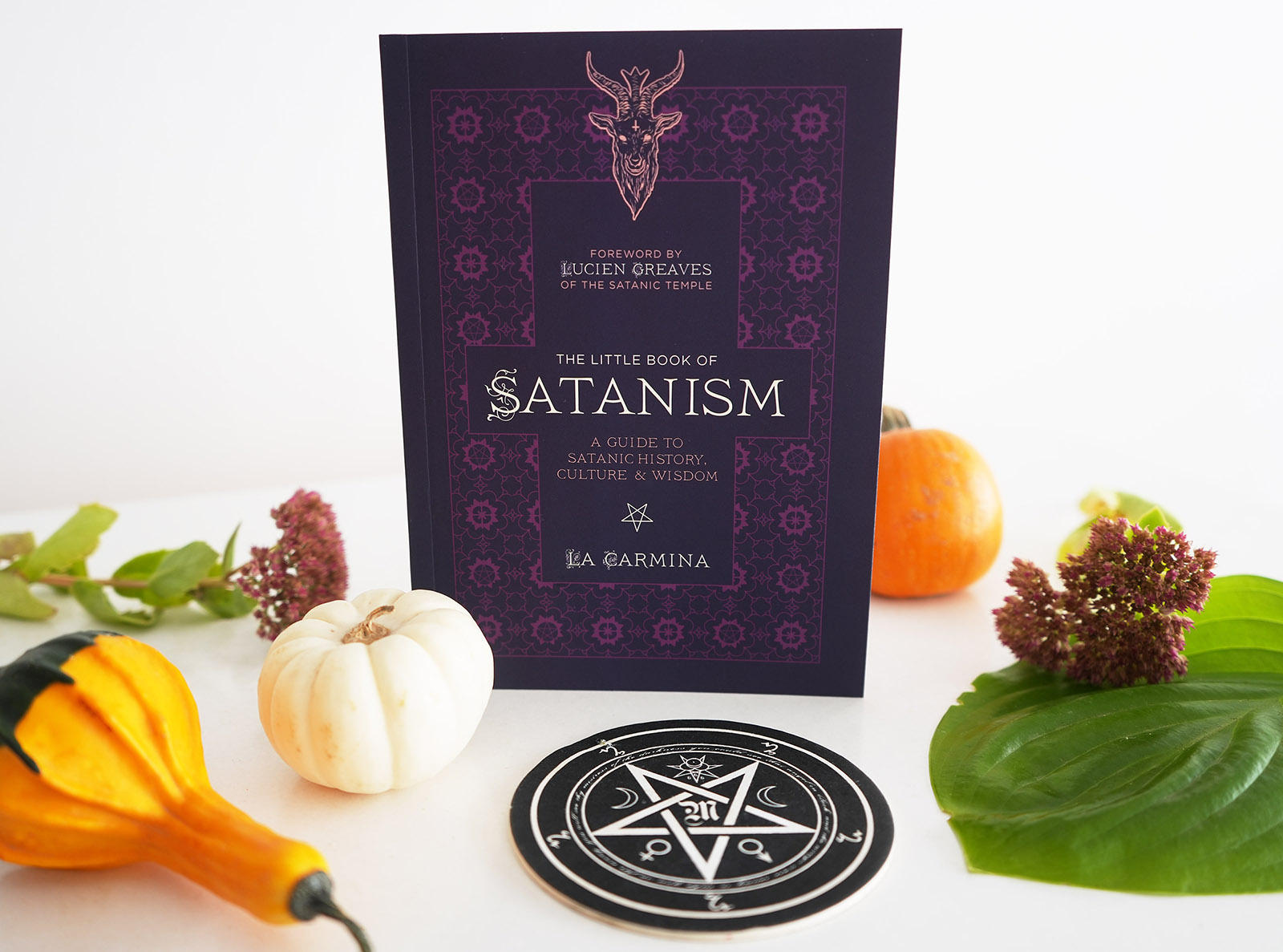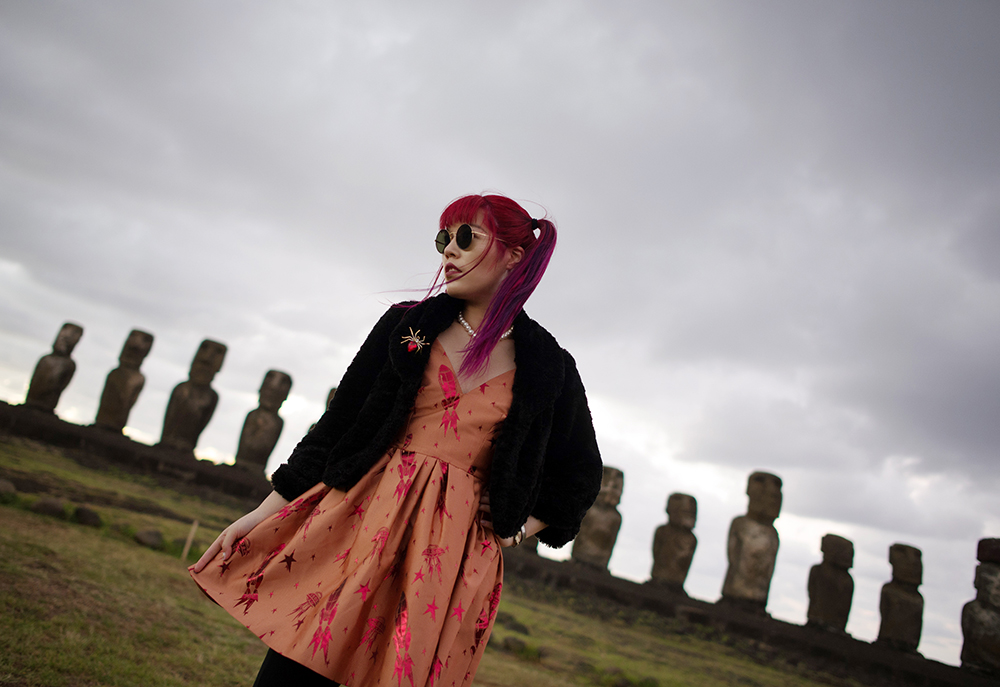(RNS) — “Do satanists really worship the devil with blood sacrifices?”
That’s the most common question asked of alternative journalist La Carmina, whose new book, “The Little Book of Satanism,” tackles that question and others, pulling back the curtain on the history and modern practice of satanism.
Questions about blood sacrifices are typically asked in jest, she said, but the stigma lingers. La Carmina, a Yale Law School graduate who identifies as a “friend of Satan,” posits that modern satanism champions independence, freedom of thought and personal expression.
As the fashion and travel writer explains in her book, the label “satanic” has been pinned on anything or anyone that “falls outside the norm.” This usage has led to a legacy of “lurid fantasies,” including “ghoulish figures in black cloaks, chanting ‘Hail Satan!’ as they conduct a blood sacrifice on a pentagram for the Prince of Darkness.”
Such accusations were at the heart of the infamous European and American witch trials during which healers and social misfits were often labeled satanists. “In the late 17th century, Parisian women working underground as abortionists and spell-makers were taken to trial for invoking the devil,” La Carmina explained in a phone conversation from Tokyo.

“The Little Book of Satanism” by La Carmina. Photo courtesy of La Carmina/lacarmina.com
“Time and time again, it is society’s outcasts,” she said, “that are labeled as Satan’s bedfellows and suffer consequences from ostracism to jail and executions.”
The biggest misconception today, she said, is that modern satanism has no values. “This leads to a number of consequences, from satanists being deemed evil and shunned, to being denied fair and equal access to public forums.”
RELATED: In ‘Hocus Pocus 2,’ Disney takes the panic out of witchcraft
In June, in Salem, Massachusetts, the Satanic Temple porch was set on fire. Daniel Damien Lucey, who was charged with arson, told police the temple housed “devil worshipers” who “need to be wiped out.” He has since been indicted with destruction of a place of worship, among other crimes.
The Salem-based Satanic Temple is a religious organization that pushes for the strict separation of church and state and other civil rights issues. It claims about 700,000 registered members around the world.

Fashion and travel writer and alternative journalist La Carmina has a new book titled “The Little Book of Satanism.” Photo courtesy of La Carmina/lacarmina.com
Most satanists are nontheistic, La Carmina said, and they view Satan as a symbol, not a god.
Satanism appeals to people who feel marginalized in some way, La Carmina said. She includes herself in that group.
Canadian author Kate Freuler embraced satanism for the same reason.
“I really identified with celebrating one’s outsider status,” she said.
Freuler believes that La Carmina’s book will help curb some of the misinformation about satanists and their practices. She is particularly glad to see “satanism becoming a known recognized force against oppressive systems.
“I’m happy to be alive at a time where I’m seeing this happen,” she said.
For Freuler, satanism is an ideology and a world view, not a religion. People who simply align with the core values are embracing the path because “it makes sense in the world now,” she said.

Alternative journalist La Carmina in Palm Springs Desert. Photo courtesy of La Carmina/lacarmina.com
La Carmina grew up in Canada, too, as a “staunch atheist.” Partly, that’s because her family immigrated from “one of the most atheist cities in the world” — Hong Kong. “They thought religion was strange, unnecessary.”
She came to the U.S. to study at Columbia University and then Yale Law School, where she developed a fascination with goth and other alternative subcultures. It was through the goth culture that she first met satanists, although they were theistic, and the practice was not for her.
While exploring Japanese satanism, La Carmina found nontheistic satanism and was sold.
In recent years, La Carmina has spent much of her time in Japan, where satanists have an entirely different experience due to Japan’s unique religious makeup. According to Pew, over 90% of the population of Japan is either unaffiliated, Shinto or Buddhist or a combination. “There are many individuals that self-identify as satanists or include satanism in their syncretic spiritual practice (along with, for example, Shinto and Buddhist ideas),” she said.
Because Christians make up less than 2% of the population, Japanese satanism is not a “reaction to Christianity,” La Carmina explained. “Satanists in Japan don’t grow up with the fundamentalist influence or Christian symbols or stories that are omnipresent in places like the U.S.,” she said. Adherents can wear or carry satanic symbols, such as an upside-down pentagram, without incident or backlash.

Alternative journalist La Carmina visiting Easter Island. Photo courtesy of La Carmina/lacarmina.com
However, adopting satanism is still an act of rebellion, even in Japan. But it’s a cultural statement challenging social conformity rather than a religious one.
It is that same rebellious spirit of non-conformity that permeates the practice of modern satanism no matter the cultural backdrop, even in the U.S. where its legacy is deeply intertwined with politics and religion, and remains so today.
“The Satanic Panic certainly did not end in the 1990s,” La Carmina said. “Today, we see these conspiracy theories take on new life with QAnon drops about satanism in politics, Pizzagate … and other recent events that try to blame satanists for evil-doings.”
“The rhetoric is stronger than ever,” she said. “I see this as a continuation of the ‘anti-satanism’ that began in the Middle Ages and continued over millennia.” While she is not surprised by any of it, she maintains a positive outlook, saying that satanism isn’t about belief, it is about expression and “it is beautiful.”
RELATED: When it comes to Halloween, pastors have opinions, according to new survey





